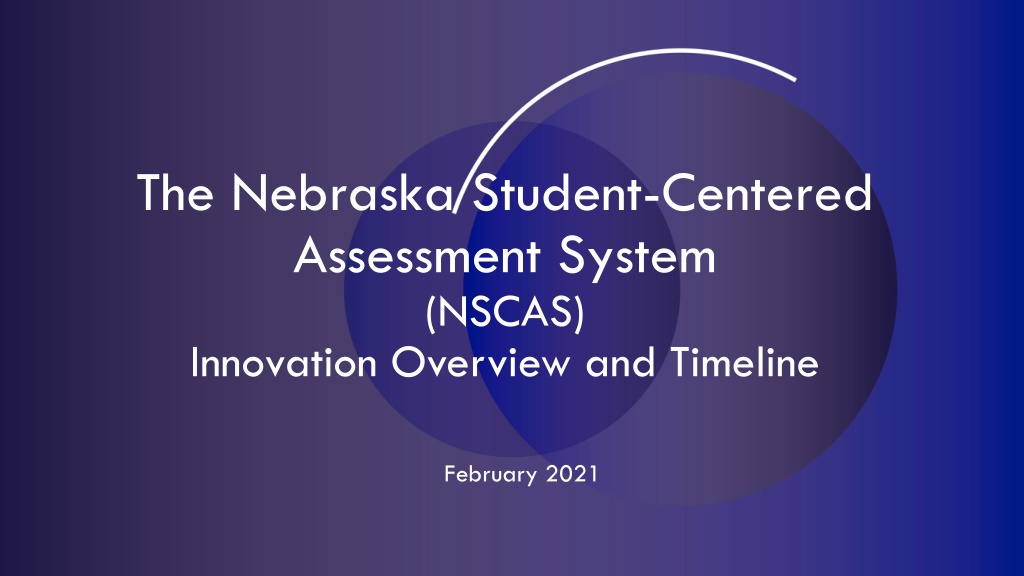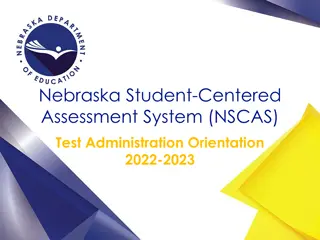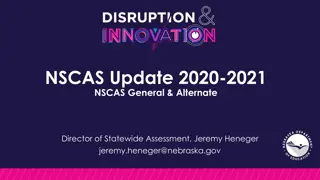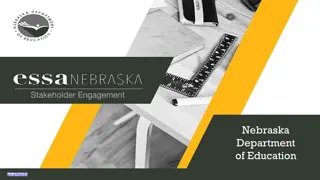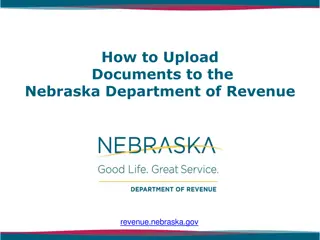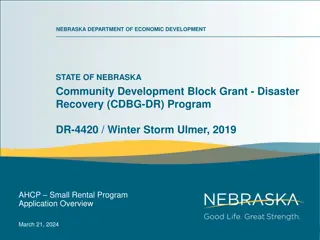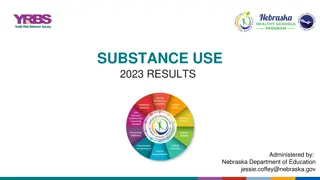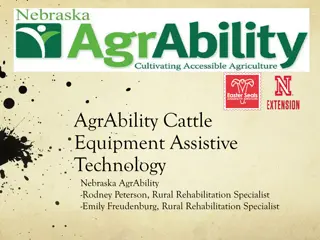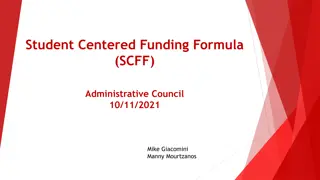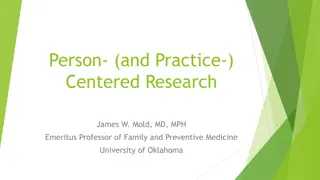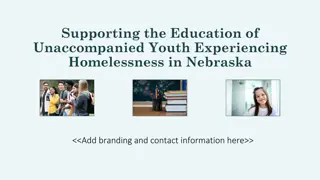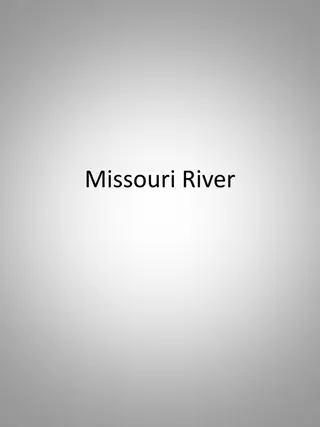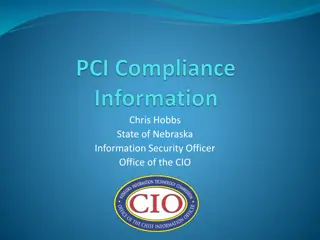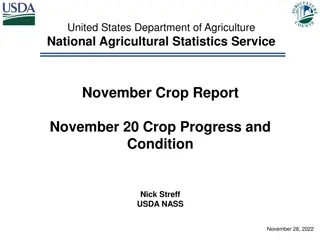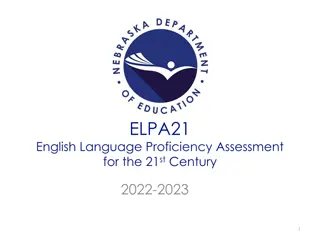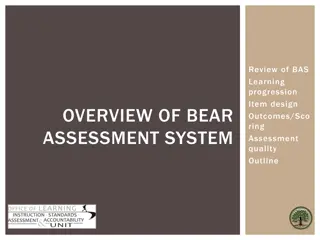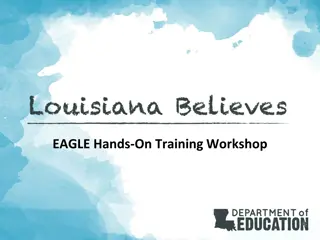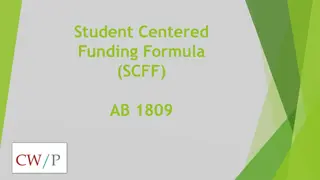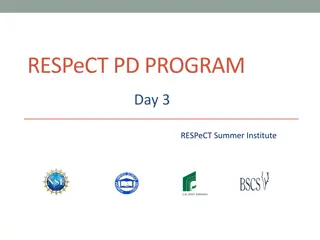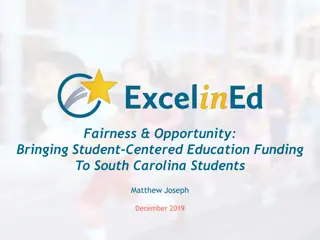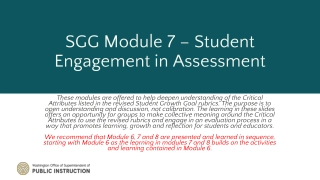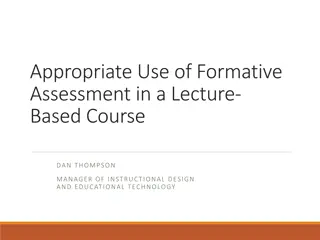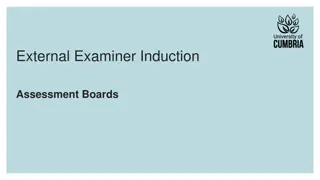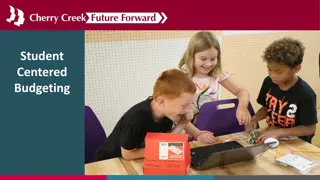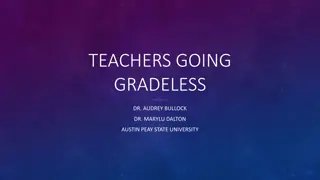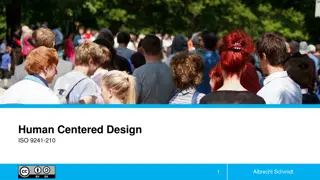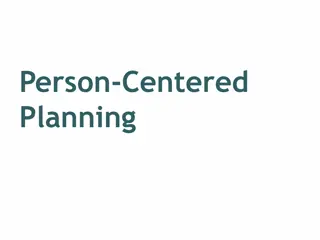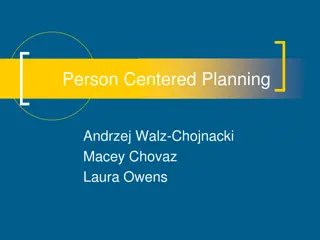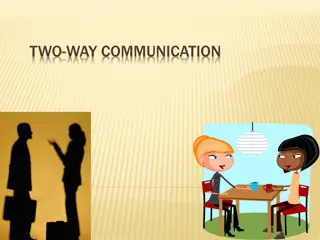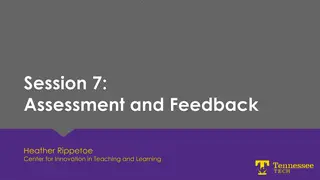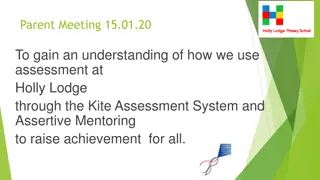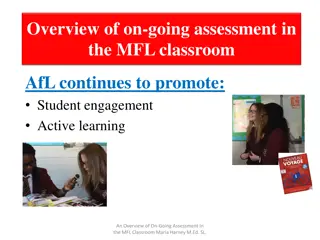Evolution of Nebraska Student-Centered Assessment System (NSCAS)
The NSCAS has evolved since 2017 to become a more student-centered assessment system, driven by feedback from Nebraska educators. The system aims to provide timely and relevant data to guide instruction, reinforce assessment as a tool for learning, and support the application of learning in real-world contexts. By incorporating multiple opportunities for student showcase within state standards, decreasing testing time, and leveraging NSCAS Summative and MAP Growth strengths, the system is designed to enhance the overall learning experience.
Download Presentation

Please find below an Image/Link to download the presentation.
The content on the website is provided AS IS for your information and personal use only. It may not be sold, licensed, or shared on other websites without obtaining consent from the author. Download presentation by click this link. If you encounter any issues during the download, it is possible that the publisher has removed the file from their server.
E N D
Presentation Transcript
The Nebraska Student-Centered Assessment System (NSCAS) Innovation Overview and Timeline February 2021
Level Setting October of 2019 Announced Transition Through-Year Adaptive (TYA) Assessment Model Context Setting and Impetus of Change NSCAS Innovations Presentation YouTube Video, Time: 1:00:21 High Level Description of the Model & Timeline NSCAS General Summative ELA Mathematics
Level Set World Changed Pandemic Move to Remote Learning Suspension of 2020 Assessments Since March of 2020 NSCAS Innovation Update Timeline and Evolution
NSCAS Innovation Update Agenda Innovation overview Timelines and results 2020-2021 2021-2022 This is the Way Forward Professional learning and Communications Research updates
Presentation Goals Provide high-level overview of TYA Reestablish timeline transition 2020-21 2021-22 2022-23 Review plans for ongoing feedback and communication Examine ongoing input methods and research needed to make the transition Provide some reassurance!
High-Level Overview of through-year adaptive assessment model
The Evolution of NSCAS NSCAS was established with the goal of creating a more student-centered assessment system Since 2017 we have been engaged in an intentional process of evolution focused on making the system more relevant to teaching and learning Feedback from Nebraska educators has been and will continue to be critical to this process
Educator feedback in action Goals of NSCAS adaptive through-year assessment: Provide more useful data throughout the year to guide instruction. Reinforce assessment as an instructional tool. Support the examination of learning in context. Provide multiple opportunities to showcase student learning within the context of Nebraska s College and Career Ready Standards. Decrease overall testing time. Utilize the strengths of NSCAS General Summative & MAP Growth.
AQuESTT Tenet Change Student Achievement and Growth: A balanced assessment system that includes results from multiple sources is used to measure student growth and achievement of Nebraska s college and career ready standards. A balanced assessment system is a necessary part of the instructional process to improve achievement and growth for each student.
Introducing . . . NSCAS Growth Our name for the NSCAS adaptive through-year assessment
Where we have been: Fall Winter Spring MAP Growth* (RIT) MAP Growth* MAP Growth* NSCAS General (RIT) (RIT) (Summative Proficiency) Formative instructional practice and professional learning *District optional
Where we are headed: Fall Winter Spring NSCAS Growth ELA and Math NSCAS Growth ELA and Math NSCAS Growth ELA and Math* (RIT) (RIT) (RIT) (End of the Year Summative Proficiency) Formative instructional practice and professional learning *District optional
NSCAS Growth benefits Leverages interim assessments to produce both growth and proficiency information Aligned to Nebraska standards Streamlines testing and increases coherence (same learning targets and testing protocols vs. separate interim/summative systems) Adapts to efficiently and accurately measure student learning Helps inform next steps/actions in learning Measures growth within and across years Tells a longitudinal story Provides RIT scores, access to NWEA s national norms Avoids the administration of both an interim and a summative test in the spring (one test in spring vs. two)
The Pathway to NSCAS Growth
Spring 2021: A time of transition NSCAS Phase I Pilot for ELA and mathematics Transitional test that is neither the NSCAS General Summative nor NSCAS Growth (adaptive through-year assessment) Will assist with the transition to NSCAS Growth (through-year adaptive summative assessment) Will support research related to the impact of COVID May help identify unfinished learning that may exist for each student We are taking a different approach to science assessment Students in grades 5 & 8 will take a field test for Nebraska s College and Career Ready Standards for Science (NCCRS-S) NSCAS Alternate is still available for ELA, math, science Third-year cohort high school students will still take the NSCAS ACT or NSCAS Alternate
2020-2021Timeline Fall Winter Spring NSCAS Phase I Pilot (ELA, Math) MAP Growth* (Science, Reading, Language, Math) MAP Growth* (Science, Reading, Language, Math) NSCAS Summative Field Test (Science) MAP Growth* (Science, Reading, Language, Math) *District optional
NSCAS Phase I Pilot Results Scores not reported to public or families Districts receive individual results (no aggregation) Spreadsheet file RIT Score (comparable to MAP Growth) Estimated achievement level Results will not be used for accountability classifications or designations Results not comparable to preceding years; should be interpreted with caution and in context of other data sources Districts should continue to rely on existing assessments such as MAP Growth to inform teaching and learning
2021-2022 Timeline Partially Operational Fall Winter Spring NSCAS Growth (ELA, Math) NSCAS Growth Pilot (ELA, Math) MAP Growth* (Science, Reading, Language, Math) NSCAS Summative (Science) MAP Growth* (Science, Reading, Language, Math) MAP Growth* (Science, Reading, Language, Math) *District optional
Intended test results in 20212022 Winter 2021-22 NSCAS Growth pilot provides within-year growth on the RIT scale Ability to provide immediate return of preliminary RIT scores (pending spring 2021 linking study results) Standard setting for ELA and Mathematics Proficiency score determined in summer 2022 Research will inform results that can be provided
2022-2023 Timeline Fully Operational Fall Winter Spring NSCAS Growth (ELA, Math) NSCAS Growth (ELA, Math) NSCAS Growth (ELA, Math) NSCAS Summative (Science) MAP Growth* (Science) MAP Growth* (Science) MAP Growth* (Science) *District optional
Retaining the best of MAP Growth The new model will: Take about the same amount of time per content Measure student performance & growth irrespective of grade level, within and across years Produce RIT information in fall, winter, & spring Provide access to NWEA s norms so growth can be considered in context of similar students nationally Be adaptive, accounting for differences in scope & sequence (local control is retained) Include access to the Learning Continuum or a similar, improved tool Support student mobility (test scores & longitudinal history will follow students from one school or district to another)
Retaining & improving aspects of the NSCAS Summative The new model will: Measure student performance relative to grade-level expectations, adding criterion-referenced information to reports in fall, winter, & spring Provide information based on Nebraska s Achievement Level Descriptors (ALDs) to better support teachers in helping students reach & exceed standards-based learning targets Potentially improve the Learning Continuum by transforming it into a tool rooted in Nebraska s ALDs Provide multiple chances for students to demonstrate proficiency (or beyond) vs. just one chance at year s end Nebraska educators will continue to have a strong voice in the assessment system.
How it will feel different from current state No more need to administer two tests (or trade MAP Growth for NSCAS Summative) in the spring Spring test is just one of three interim tests about the same length as fall & winter tests, provided the student completed those tests Processes will become standardized across fall, winter, & spring e.g. accommodations, linguistic supports, security, retake policies, test windows, etc.
But Jeremy what about the details?
Decision Making Philosophy Prioritize Interim Consider Summative Prioritize Growth Consider Accountability Consider Security Prioritize Students Consider Policy Makers Prioritize Educators Consider Other Stakeholders Consider Statutory Requirements Prioritize Ease of Use Prioritize Continuous Improvement
Moving Forward NSCAS Growth Information Monthly Advisory Meetings Based around key areas (data/reporting, test management, psychometrics, etc.) Followed by monthly updates for everyone (30-60 min. remote) Recorded webinars posted on our webpage Update NSCAS Frequently Asked Questions Examples & Feedback Opportunities Ongoing Educator Feedback
Nebraska Educator Opportunities Assessment & Accountability Advisory (Biannual & Ad Hoc) Assessment Thought Leaders (Ad Hoc) Smaller group Content Advisory Boards (Ad Hoc) ELA & Mathematics NE content experts Annual Test Development Content specific Achievement Level Descriptors Standards Review Accessibility Review and Update (summer 2021)
Professional Learning & Communications
Communications Plan 2021-22 Communications (starting in July) Core audiences: Universal stakeholders (educators, parents, state board, general public) Nebraska educators District assessment coordinators Goal: Educate on the transition to through-year assessment and support preparedness, positive perceptions, and commitment to participating in the 2021-22 pilot Tactics: NDE keynote at administrator days (target: educators) Video focused on equity and through-year connection (target: universal audiences) Video focused on educator involvement in shaping NSCAS and the evolution to through-year assessment (target: educators) Vignette webinars tackling more specific or technical details (target: district assessment coordinators)
Professional Learning 2021-22 Core audiences: Certified Facilitators Plus-ones to join CF Goal: to strengthen the capacity of all Nebraska educators, including the Certified Facilitators, through system-wide professional learning (grounded in Professional Learning and Academic Content Standards) to increase the role-based knowledge, skills, and explicit transfer-to-practice of all aspects of the Nebraska balanced assessment system. Tactics: Professional Learning Workshops: Assessment Literacy and Formative Assessment, Focusing on Growth, Interim Tools, and Writing with Evidence CF Networking meetings eNewsletter Webinars
Research goals to support the transition to NSCAS Growth Research study goals: Establish a statistical link between MAP Growth and NSCAS scales Running simulations and examining models
Content activities for transition to NSCAS Growth Phase I Pilot in Spring 2021 to prepare for the transition Alignment studies MAP Growth Grades 3-8 Additional banks and MAP Growth Grades 1, 2, and HS Range ALD review Range ALD Tool
Nebraska research participation TY instructional tool (ALD-based recommendations) and teacher insights
Nebraska research participation WFF Grant Family Report
Closing message We hear your concerns We know you value MAP Growth working to provide and improve on that data. We acknowledge that you need resources working on providing resources for you to share. We value your input keep asking questions and challenging us to do better. working on getting you answers.
Thank you! Questions?
